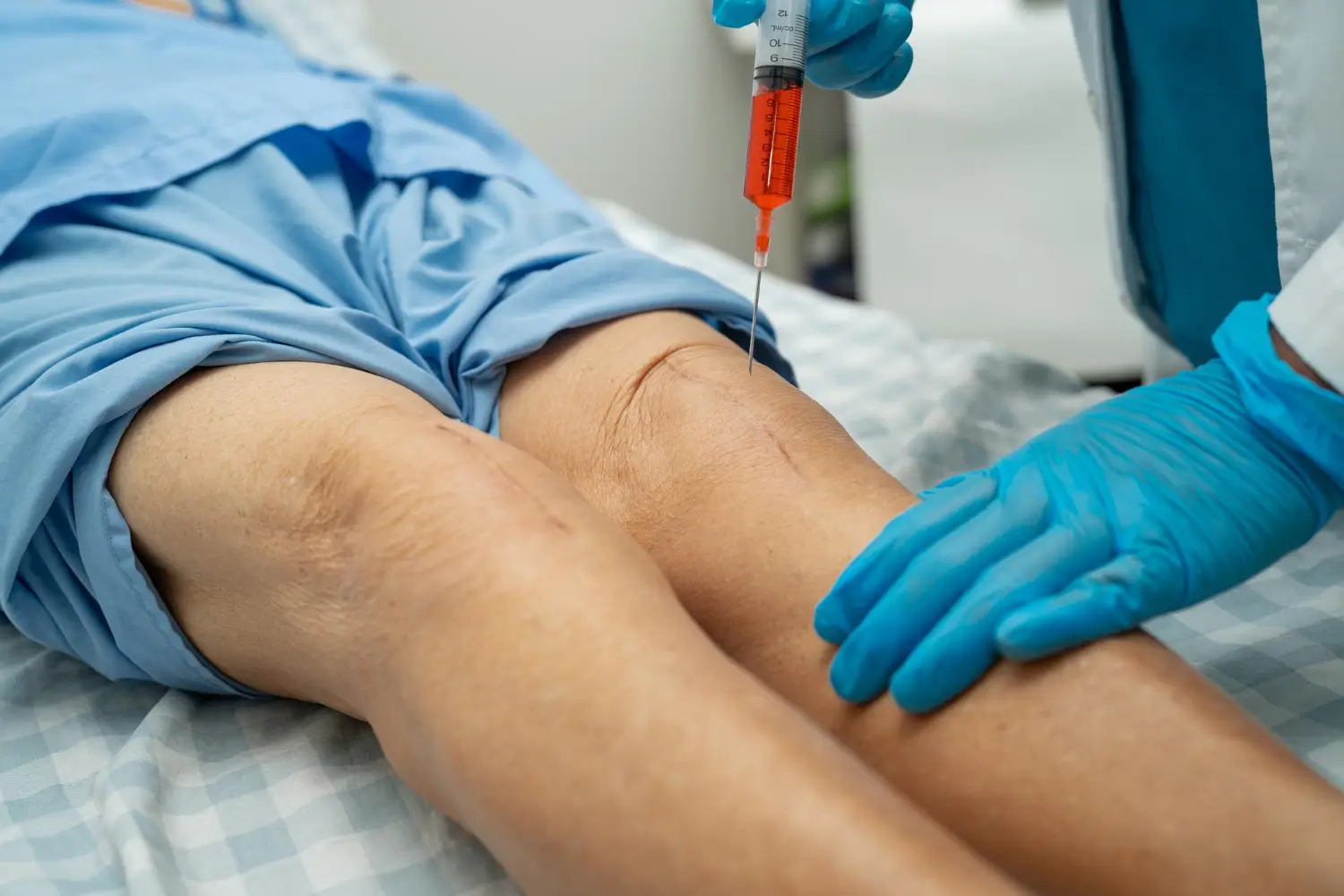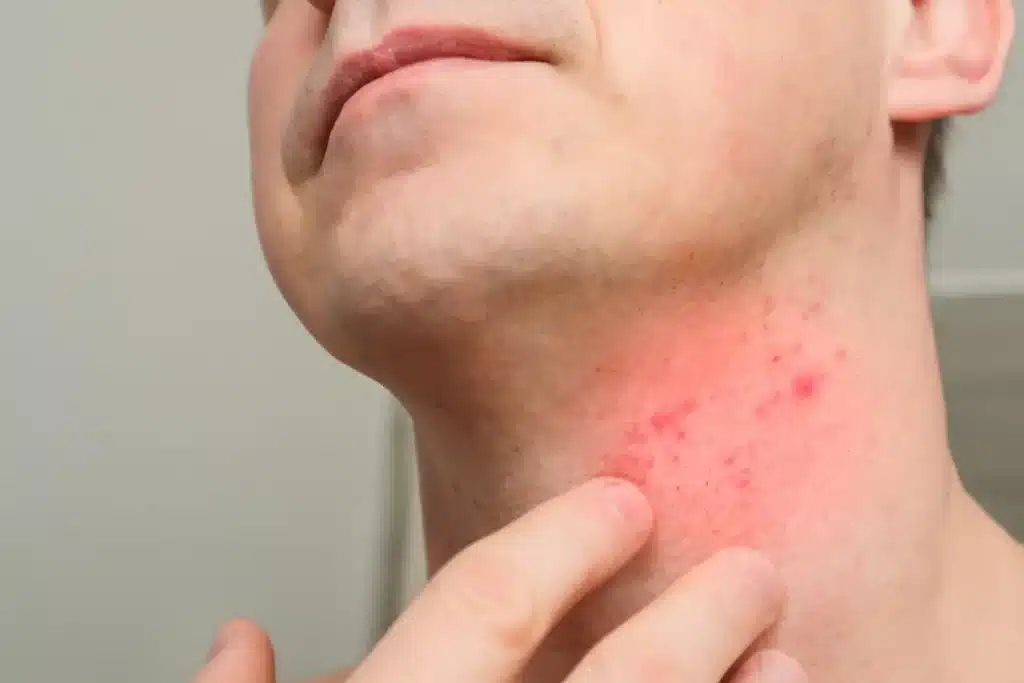Knee osteoarthritis (OA) affects over 365 million people worldwide, making it the most frequently affected joint. The condition leads to pain, swelling, and stiffness, significantly impacting daily activities and quality of life. As the global population ages, the prevalence of knee OA continues to rise.
Two promising options for knee OA are Cingal and Monovisc. Each offers a different approach to addressing the symptoms of the condition, with a focus on improving comfort and mobility. These treatments are designed to relieve patients dealing with joint discomfort and limited movement.
In this article, we will compare Cingal and Monovisc to determine which is a better treatment for knee OA based on their benefits, ingredients, and potential side effects.
Key Takeaways
- Cingal and Monovisc are both viscosupplementation treatments designed to alleviate knee pain and improve joint function in osteoarthritis (OA). They offer non-surgical relief.
- Cingal combines corticosteroids and hyaluronic acid, providing immediate relief from inflammation and offering longer-term joint support and pain reduction in knee OA.
- Monovisc is a single-dose hyaluronic acid injection that effectively lubricates the joint, reducing knee pain and improving mobility, especially in mild to moderate OA cases.
- The decision between Cingal and Monovisc depends on the patient’s specific symptoms, desired treatment outcomes, and preferences for either faster relief or fewer injections.
About: Medical Spa RX provides medical practices with premium products at the best prices. If you’re looking to buy Cingal wholesale for your practice, the sales representatives at Medical Spa RX can give you guidance.
Understanding Cingal and Monovisc
Cingal and Monovisc are both advanced treatments designed to alleviate knee osteoarthritis (OA) pain and improve joint function through hyaluronic acid-based injections. Hyaluronic acid works by restoring lubrication in the knee joint, reducing friction, and alleviating pain caused by OA.

Cingal combines hyaluronic acid with a corticosteroid, providing immediate pain relief due to the steroid’s anti-inflammatory effects. The hyaluronic acid offers long-term joint support by improving lubrication. This dual-action approach helps to reduce both the pain and inflammation associated with OA.
Monovisc, on the other hand, offers a single, highly concentrated dose of hyaluronic acid. This approach focuses on restoring joint lubrication and reducing friction over time, providing sustained pain relief.
Typically, Cingal is administered as a single injection, with effects lasting up to 6 months. Monovisc, like Cingal, is also administered as a single injection, and its effects can last up to 6 months as well, depending on individual patient response. Additional treatments may be recommended for both products based on the patient’s condition and needs.
Comparing Clinical Outcomes
Cingal and Monovisc are both proven, non-surgical treatments for knee osteoarthritis (OA) that have shown significant clinical benefits in managing pain and improving joint function. Extensive studies support the efficacy and safety of both products, and here’s a closer look at the clinical outcomes.

The Cingal 13-01 and 16-02 studies demonstrate the efficacy and safety of combining hyaluronic acid and corticosteroids for treating knee OA. In these studies, Cingal provided significant pain relief and improved joint function. Participants experienced a reduction in pain by X% and an improvement in joint function by Y%, with results lasting up to 26 weeks.
Cingal outperformed saline and other injectable comparators in these trials, highlighting its superiority in managing OA symptoms. The combination of hyaluronic acid for joint lubrication and corticosteroids for inflammation offers both immediate relief and long-term support for patients.
Monovisc has also demonstrated its efficacy in treating knee OA. In a Phase III randomized, double-blind clinical trial, a single injection of Monovisc resulted in a significant reduction in pain by X% and improvement in joint function by Y%, with results lasting up to 6 months.
Compared to saline, Monovisc provided long-term pain relief and improved mobility, making it a reliable option for patients seeking non-surgical management of knee OA.
Choosing the Right Treatment
When deciding between Cingal and Monovisc for knee osteoarthritis (OA), consider the following key factors:

- Pain Level: Cingal offers rapid pain relief, especially within 1–3 weeks due to its corticosteroid component.
- Relief Duration: Monovisc relieves pain for up to 6 months, while Cingal lasts up to 26 weeks.
- Injection Frequency: Monovisc requires only one injection, while Cingal may require two injections.
- Need for Quick Results: Cingal offers faster pain relief with its combination of hyaluronic acid and corticosteroid.
- Side Effect History: Consider previous reactions to injections—Monovisc has fewer side effects due to its single-hyaluronic acid formula.
- Treatment Goals: Choose Monovisc for long-term relief or Cingal for quick and substantial pain relief.
- Past Treatment Effectiveness: If Monovisc didn’t work, try Cingal for better results.
- Health Conditions: Certain health issues may make Monovisc safer than Cingal, especially if corticosteroids are a concern.
- Activity Level: Monovisc offers long-lasting relief for active patients, while Cingal is better for those needing immediate results.
- Regulatory Considerations: Patients should also consider the Monovisc and Cingal FDA approval status. Unlike Monovisc, Cingal is not yet FDA-approved. This may influence a patient’s decision, particularly in the U.S. market.
Conclusion
Choosing between Cingal and Monovisc for knee osteoarthritis pain depends on your preferences. Cingal offers quicker pain relief, while Monovisc requires fewer injections, making it more convenient. Both treatments are effective, so consider whether fast relief or fewer treatments best align with your needs before making a decision.
FAQs
1. What is Cingal, and how does it work for knee OA?
Cingal is an FDA-approved injection combining hyaluronic acid for joint lubrication and corticosteroids to reduce inflammation. It helps relieve knee pain, stiffness, and swelling caused by osteoarthritis.
2. How quickly will I experience pain relief from Cingal?
Many patients experience significant pain relief within 1-3 weeks after receiving a Cingal injection, with some improvements continuing for up to 26 weeks.
3. How long do the effects of Cingal last?
Cingal’s effects typically last up to 26 weeks, providing immediate pain relief and long-term joint support for managing knee OA symptoms.
4. Is Cingal suitable for all knee OA patients?
Cingal suits many knee OA patients, especially those seeking non-surgical treatment. However, discussing with a healthcare provider whether it’s appropriate based on individual health and medical history is essential.
References
World Health Organization. Osteoarthritis. www.who.int. Published July 14, 2023. https://www.who.int/news-room/fact-sheets/detail/osteoarthritis
Knee osteoarthritis: Causes and treatments | Knee pain relief. Kneepainrelief.ca. Published 2019. Accessed November 28, 2024. https://kneepainrelief.ca/
Next Generation OA Pain Management for Knee Pain | Cingal. NEXT GENERATION, NON-OPIOID OA PAIN MANAGEMENT. Published June 10, 2016. https://www.cingal.com/why-cingal/next-generation-osteoarthritis-treatment/





















